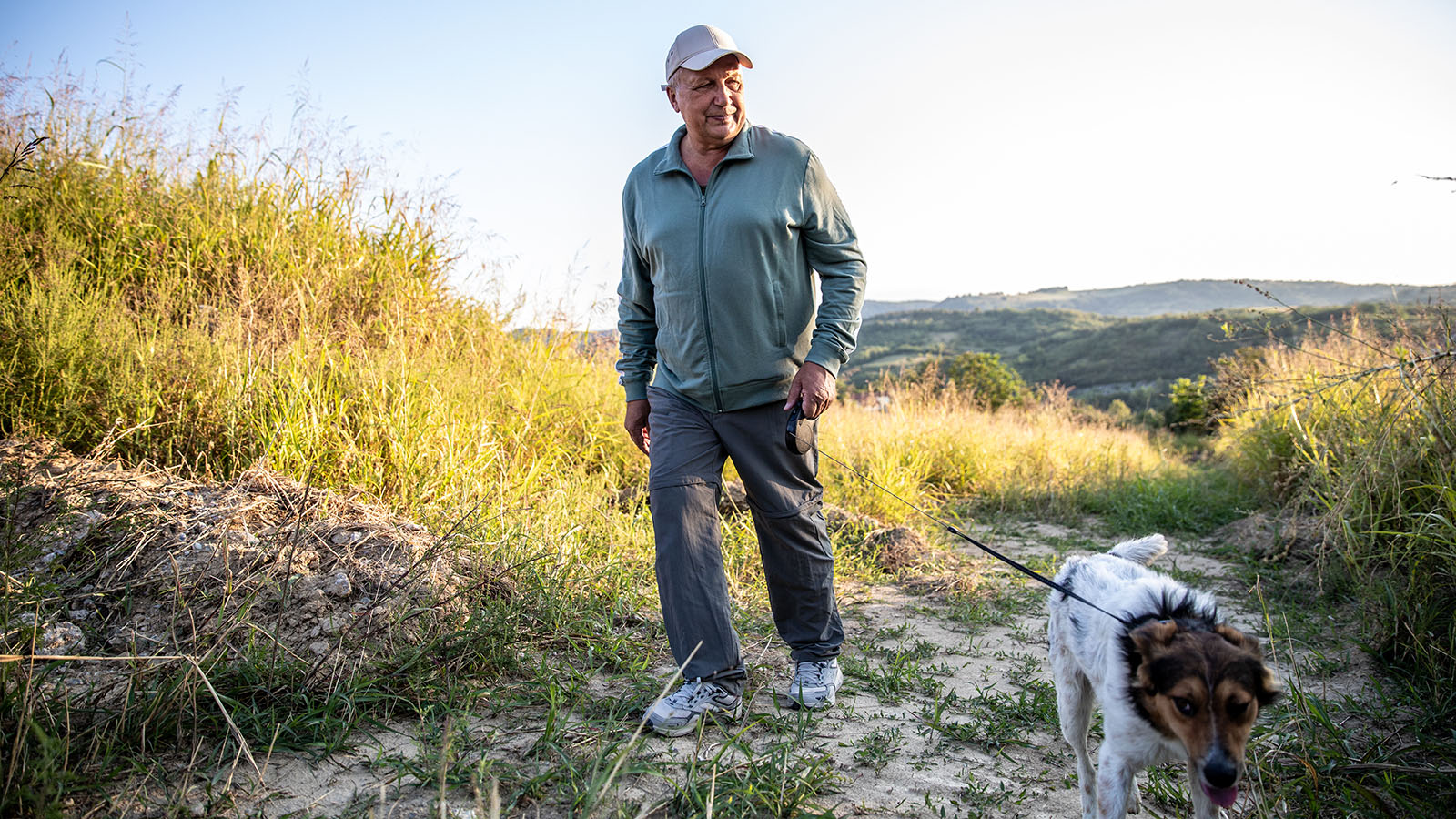Why Your Daily Walk May Be Making You Really Sore
If social distancing moved you out of the gym to walking every day, you may be feeling some unexpected aches and pains. Here's why you may be sore and when to seek treatment.

By Eric Requa, DO, Sports Medicine Primary Care Physician—Virtua Sports Medicine
Getting out for daily walks is one way people are getting in exercise, while also social distancing. It allows you to get out of the house and gives you the opportunity to exercise safely without too many restrictions.
But, a sudden increase in your walking time, days, or distance also can increase your aches and pains—and even your risk for some injuries. Here are some of the areas where you may be sore, and how to know when to seek treatment.
Hamstrings
The hamstring tendons connect the muscles of the back of the thigh to the pelvis, knee, and lower legs. Overuse or overexercise, especially without a proper warm up, can inflame the hamstrings. Symptoms can include pain behind the thigh or knee, stiffness or pain after walking, and swelling.
The best way to treat sore hamstrings is with RICE—rest, ice, compression and elevation. It’s also important to stretch AFTER your muscles are warm. The simplest way to stretch your hamstrings is to sit on the floor with your legs straight out in front of you. Extend your arms, bend at the waist, and reach as far forward over your legs as you can until you feel tension, but not pain. Hold the stretch for 15 to 30 seconds.
IT Band
The iliotibial (IT) band is a connective tissue that runs down the side of the thigh, extending from the pelvic bone to the shinbone. IT band soreness most often affects runners but also can occur if you walk long distances. If the IT band gets too tight, it can lead to swelling and pain around your knee or hip. In addition to this pain, you might feel clicking or popping on the outside of your knee or pain up and down your leg.
IT band soreness usually is treated with rest and over-the-counter anti-inflammatory medicine. You also can use a foam roller on the outside of your leg to loosen the tissue. To prevent further IT band injury, it’s important to stretch all of your leg muscles after you’ve warmed up. This includes your hamstrings, quadriceps, calves, and hip flexors.
When walking, be mindful of which side of the road you’re walking on. Most streets are sloped on either side to allow water to run off. While this helps prevent flooding, it also creates an uneven surface that changes how your feet land—putting more strain on one side versus the other. Where it’s safe, I’d recommend walking half the time on one side of the road and half on the other. Or, walk half of your set distance, turn around, and walk home on the same side of the road.
Knees
Your knees take a lot of wear and tear on any normal day. So, if you’ve started taking daily walks, it could trigger a flare up of knee arthritis that you didn’t even know you had. Knee arthritis happens as the cartilage that cushions the joint wears away with age. If you have it, you may feel stiffness, swelling or pain in your knee and a clicking or popping.
Joints are meant to move so activity can help ease arthritis pain. But, too much activity can aggravate the issue.
The first thing you can do is space out your walks, walking every other day instead of every day. You also can use ice, anti-inflammatories, or acetaminophen to treat the pain.
I also recommend checking your sneakers for wear and tear like cracks in the sole or tread loss. Treat your sneakers like tires on a car and replace them when they’re worn out (usually every 6 months or 300-400 miles). A good walking sneaker or cross-trainer provides a flexible sole, a well-cushioned insole, and good arch support.
Achilles
The Achilles tendon connects the back of your calf muscle to your heel. When walking, it helps your foot push off the ground to propel you forward. A sudden increase in how often or how far you walk can inflame the tendon, causing pain or tenderness at the back of your heel.
Like the others, rest, ice, elevation, and anti-inflammatories can help ease the pain. I also recommend warming up and stretching all of your leg muscles, but add a wall stretch for your Achilles tendon as well. To do this stretch, stand in front of a wall, flex one foot up and place the ball of it against the wall, and lean forward slightly until you feel tension but not pain.
To prevent it, wear a sneaker that provides a well-cushioned heel or add an insert that elevates the heel to take the tension off the tendon.
Take time to take care of yourself
If you’ve noticed more aches and pains, take a well-earned break from today’s walk and make time for self-care and at-home treatment.
If you still have pain that persists after a few days, schedule an appointment online to consult with a Virtua sports medicine specialist. Telehealth visits are also available.
